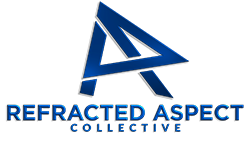
When a critical team member becomes unavailable or departs entirely, the absence exposes vulnerabilities that many fishing equipment and tackle businesses have yet to address. This gap is not just about losing skills; it’s about the operational strain and strategic uncertainty that ripple through the organization. The question isn’t if this will happen, but how prepared the business is to respond without losing momentum or market position.
- Understanding the Operational Risk of Key Personnel Loss
- A Scenario: The Sudden Departure of a Product Line Manager
- Cross-Functional Friction from Unplanned Absences
- Why This Problem Persists: The Reliance on Informal Knowledge
- The First Meaningful Shift: Establishing Clear Knowledge Ownership
- The Most Common Friction Point: Resistance to Formalizing Informal Processes
- How This Issue Manifests in Daily Operations
- Frequently Asked Questions
- Reframing the Challenge of Key Team Member Absence
- Next Steps with Refracted Aspect
Understanding the Operational Risk of Key Personnel Loss
In fishing equipment and tackle businesses, the departure or unavailability of a key team member often halts essential workflows. These individuals typically hold specialized knowledge or manage critical supplier relationships that aren’t documented elsewhere. When they leave, decisions stall, and projects lose direction. This creates a tangible drag on the business, forcing leaders to confront the cost of lost time and missed opportunities.
The tension here is straightforward: without a clear plan, the business risks operational paralysis. This is not a theoretical concern but a daily reality that affects inventory management, product development, and customer fulfillment. The pressure to maintain continuity while scrambling to fill the gap can lead to rushed hires or temporary fixes that compound the problem.
A Scenario: The Sudden Departure of a Product Line Manager
Imagine a fishing tackle company where the product line manager, responsible for coordinating new product launches and supplier negotiations, suddenly leaves. This role is central to maintaining supplier relationships and ensuring product availability aligns with seasonal demand.
Without a documented handover or backup, the team quickly encounters stalled decisions. Suppliers await approvals, marketing campaigns lose momentum, and inventory planning becomes guesswork. The absence reveals a bottleneck that wasn’t visible until the person was gone.
Leadership faces immediate pressure to redistribute responsibilities, often pulling resources from other critical areas. This scenario highlights how a single departure can cascade into operational delays and missed revenue targets, especially in a market where timing and product availability are crucial.
Cross-Functional Friction from Unplanned Absences
The loss of a key team member doesn’t just affect their immediate tasks; it fractures workflows across departments. In fishing equipment businesses, product development, supply chain, and sales teams often rely on that individual’s expertise and decision-making authority.
When that person is unavailable, product development may push incomplete specifications to suppliers, causing delays. Supply chain teams struggle to adjust orders without clear guidance, leading to stock imbalances. Sales teams face uncertainty about product availability, complicating customer commitments.
This misalignment creates inefficiencies that multiply downstream. Each department compensates in isolation, which increases operational friction and reduces overall responsiveness. The business experiences a subtle but persistent drag that leadership may not immediately connect to the root cause.
Why This Problem Persists: The Reliance on Informal Knowledge
The primary reason fishing equipment and tackle businesses continue to struggle with key personnel loss is an embedded reliance on informal knowledge and undocumented processes. Critical information often resides in the heads of a few individuals rather than in accessible systems.
This reliance creates a fragile operational model where continuity depends on the presence of specific people. Even capable teams fall into this pattern because it’s easier to rely on trusted individuals than to invest time in formal documentation and cross-training.
Over time, this becomes an invisible structural flaw. The business operates smoothly until the moment it doesn’t. Recognizing this as a systemic issue rather than an isolated event is essential to shifting how the organization manages knowledge and risk.
The First Meaningful Shift: Establishing Clear Knowledge Ownership
The initial step toward addressing the absence of a plan when key team members leave is to clarify knowledge ownership within the organization. This means identifying which roles hold critical information and ensuring that knowledge is documented and accessible beyond the individual.
This shift doesn’t require a full overhaul or complex systems. It starts with simple, deliberate actions: creating shared resources, defining backup responsibilities, and encouraging regular knowledge sharing. These moves reduce dependency on any single person and build resilience into daily operations.
For fishing equipment and tackle businesses, this approach respects existing constraints and operational realities. It’s a practical adjustment that improves continuity without adding unnecessary complexity or diverting focus from core business activities.
The Most Common Friction Point: Resistance to Formalizing Informal Processes
When businesses attempt to address the lack of a plan for key personnel loss, the most persistent barrier is resistance to formalizing what has traditionally been informal. This resistance often comes from the very team members whose knowledge is critical, who may see documentation as extra work or a threat to their unique value.
This friction manifests as delays in updating procedures, incomplete handovers, and reluctance to share insights openly. Leadership feels the pressure as decisions get postponed and operational clarity diminishes. The result is a stalled effort that leaves the business vulnerable to the same risks it aims to mitigate.
How This Issue Manifests in Daily Operations
In the daily reality of fishing equipment and tackle businesses, the absence of a plan for key team member loss shows up in subtle but persistent ways. Conversations often circle back to unresolved questions or deferred decisions. Teams resort to workarounds or manual fixes that add complexity rather than reduce it.
There’s a recurring sense of “we’ll deal with that later” that signals underlying discomfort with the unknown. Client-facing teams may hear complaints about inconsistent product availability or delayed responses. Internally, handoffs between departments feel awkward, with gaps in communication that slow progress.
These operational details create a lived experience of uncertainty and inefficiency that leaders recognize but may struggle to articulate or address directly.
Frequently Asked Questions
What’s the quickest way to reduce risk when a key team member leaves unexpectedly?
Start by identifying the most critical knowledge areas and ensure they’re documented in shared resources. Even brief, focused documentation can prevent immediate operational paralysis. Assign backup roles so others know who steps in, reducing confusion and delays.
How do I get my team to share knowledge when they’re protective of their expertise?
Frame knowledge sharing as a way to strengthen the team, not diminish individual value. Encourage small, regular updates rather than large, daunting projects. Recognize and reward collaboration to shift the culture gradually.
Is it realistic to expect full coverage for specialized roles in a small fishing equipment business?
Full coverage may not be feasible, but partial overlap and clear escalation paths are achievable. Focus on critical tasks that can’t wait and ensure someone else understands those well enough to keep things moving.
How do I balance ongoing operations with the time needed to build continuity plans?
Integrate continuity efforts into existing workflows rather than treating them as separate projects. Use brief check-ins or quick documentation sessions during regular meetings to build momentum without overwhelming the team.
What signs indicate our business is vulnerable to disruption from key personnel loss?
Look for bottlenecks where decisions or approvals consistently wait on one person. Notice if knowledge isn’t shared openly or if team members hesitate to cover for each other. Frequent last-minute crises often signal underlying fragility.
Reframing the Challenge of Key Team Member Absence
Failing to plan for the absence or departure of key team members in fishing equipment and tackle businesses carries clear costs: stalled projects, lost sales, and operational inefficiencies that erode competitive advantage. Progress means shifting from reactive firefighting to proactive knowledge management, even in small, resource-constrained environments.
This shift requires seeing the problem not as a personnel issue but as a structural one embedded in how the business operates daily. When leaders adopt this perspective, they open the door to practical changes that build resilience without disrupting ongoing operations.
Ultimately, the question of “What’s the plan when a key team member is unavailable or leaves completely?” is one of operational clarity and risk management. Addressing it is a necessary step toward sustainable growth and stability.
Next Steps with Refracted Aspect
For leaders in the fishing equipment and tackle category, gaining clarity on internal dynamics and operational risks is essential. Refracted Aspect works directly with businesses like yours through structured diagnostics and strategic guidance tailored to your industry’s realities. We understand the pressures you face and the importance of practical, actionable insight that respects your expertise and constraints.
If you’re ready to explore how to build resilience around key team members and improve operational continuity without adding complexity, consider taking the next step. You can Book a Discovery Call to have a focused conversation with peers who understand the nuances of your business environment and can help you find clarity amid complexity.
















